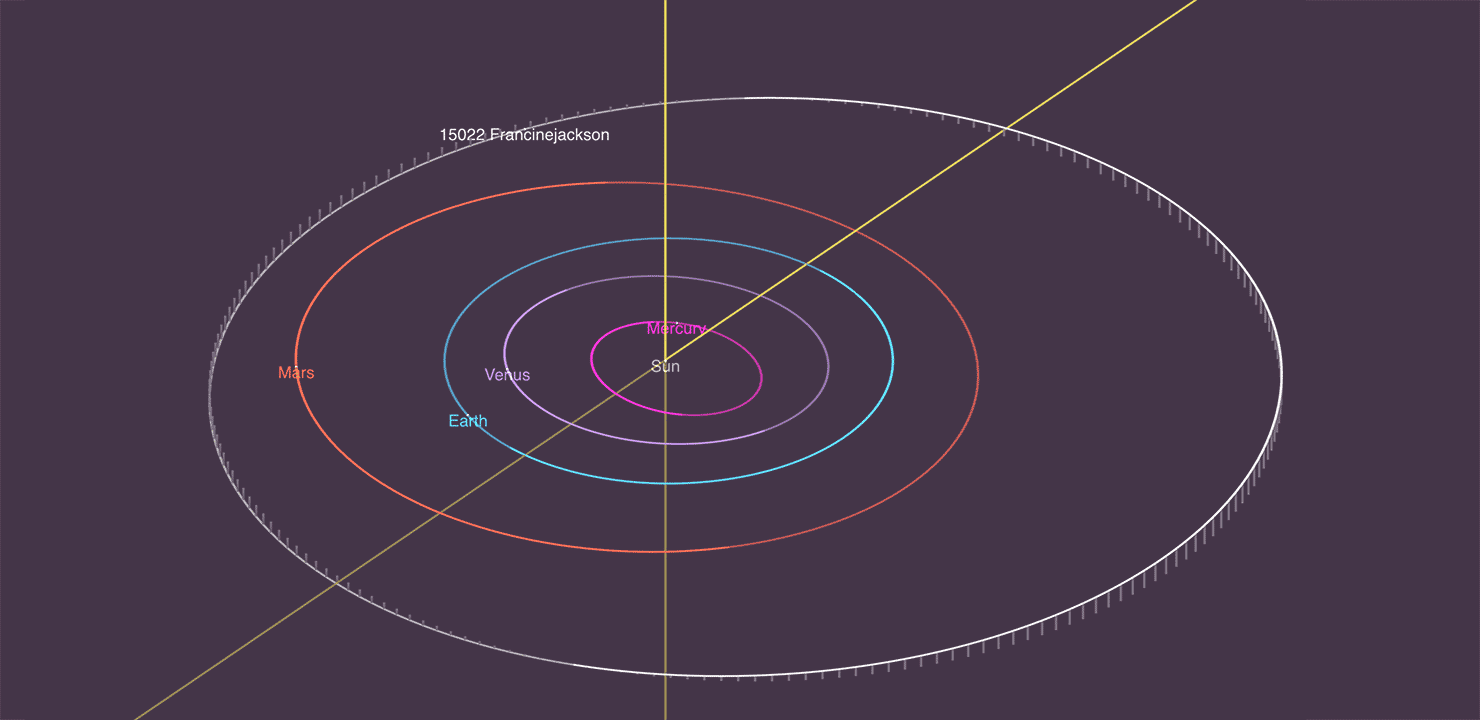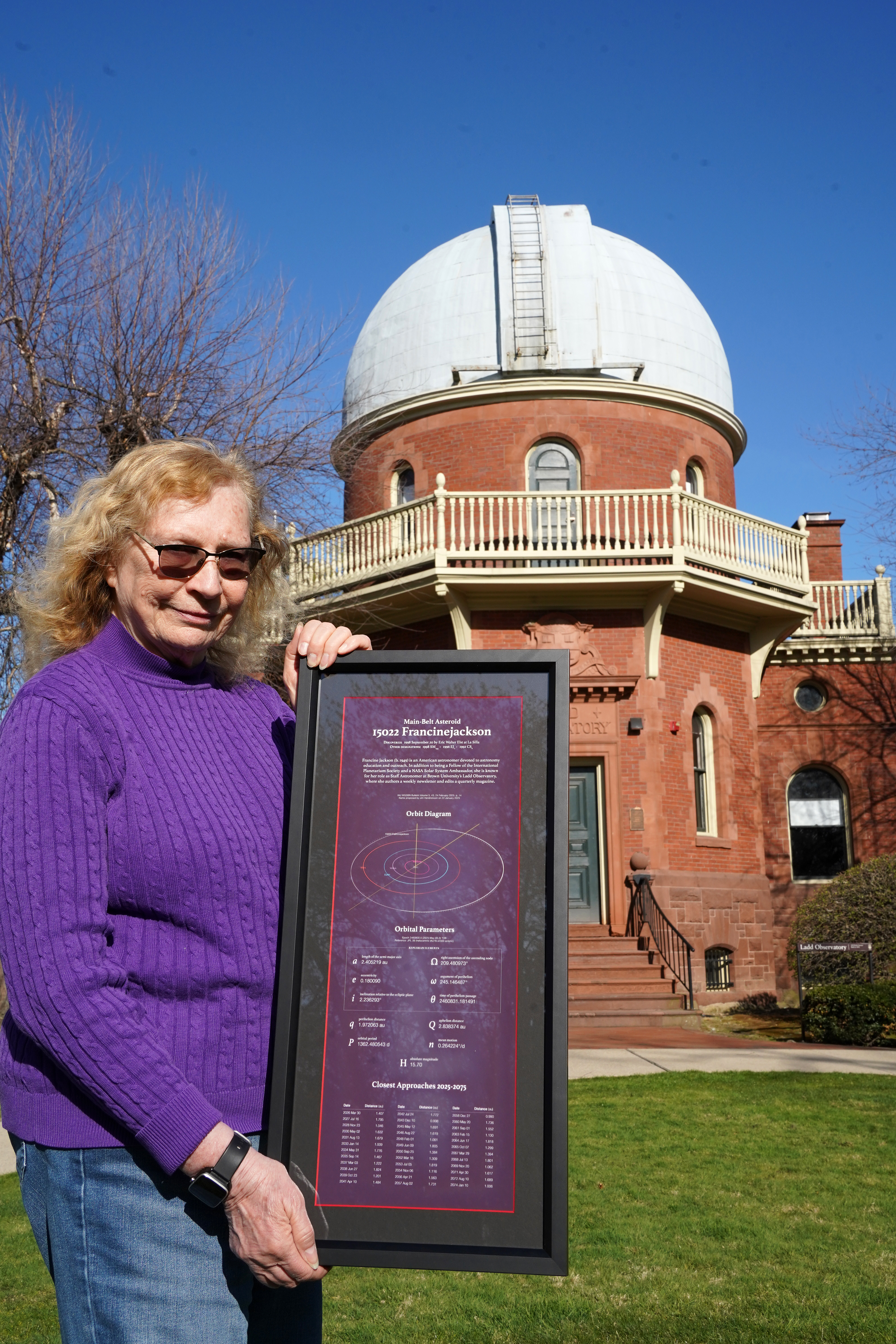
Introducing Asteroid 15022 Francinejackson
May 2025 :
On February 24, 2025, the International Astronomical Union Working Group for Small Body Nomenclature (WGSBN) recognized Francine Jackson’s contributions to astronomy education and outreach by naming an asteroid in her honor. The designation was announced in WGSBN Bulletin 5, #3, under New Names of Minor Planets.
Francine, a planetarian since 1978, was recently honored for her 50 years of service to Brown University’s Ladd Observatory, and over 20 years of writing a weekly email newsletter for the Observatory. A Solar System Ambassador, she spends many nights at star parties for the public.
The asteroid, provisionally designated 1998 SM144, was discovered by Eric Walter Elst, a Belgian astronomer who has 3,866 minor planet discoveries to his credit. It was captured on a photographic plate exposed by the 1-meter Schmidt Telescope at European Southern Observatory’s La Silla Observatory in Chile on September 20, 1998. It had been observed as early as 1992, and again in 1996, but was subsequently lost until being rediscovered in 1998.
Located within the main asteroid belt between the orbits of Mars and Jupiter, the asteroid, now officially cataloged as 15022 Francinejackson, orbits the Sun every 1362.5 days, or 3.73 years.
Its synodic period is approximately 499 days, or 1.37 years, bringing it into opposition every 16 months, on average. As it is not a large object, and never gets closer than about 1 au from Earth, observers are better served to note its closest distance to Earth, a time point that can differ from opposition by several days. This deviation is due to its eccentric orbit, which also causes its closest distance to Earth to vary between 1.0 and 1.8 au.
Its absolute magnitude has been calculated to be 15.70. No solution has yet been provided for its physical diameter or rotation period, and no moons are known to exist. Using albedo properties of other nearby asteroids with comparable magnitudes indicate that the size of 15022 Francinejackson is likely between two and four kilometers.
Unlike many bodies in the main asteroid belt, 15022 Francinejackson has a relatively low orbital inclination. At just 2.25°, it tracks close to the ecliptic, the apparent path of the Sun in our sky. This keeps it close to the plane of the solar system, and it will frequently appear close to, albeit far fainter than, the bright planets.
The next several closest approaches are on March 30, 2026 at 1.407 au, July 16, 2027 at 1.795 au, and November 23, 2028 at 1.046 au. During the closest of its approaches, it remains at a dim 17.5 magnitude, not quite bright enough to see visually with our telescopes, but easily within reach of amateur astroimaging equipment.

Learn more about 15022 Francinejackson
WGSBN Bulletin 5, #3
https://www.wgsbn-iau.org/files/Bulletins/V005/WGSBNBull_V005_003.pdf
IAU Minor Planet Center
https://minorplanetcenter.net/db_search/show_object?object_id=15022
JPL Solar System Dynamics Small-Body Database
https://ssd.jpl.nasa.gov/tools/sbdb_lookup.html#/?sstr=15022
Orbit diagram of 15022 Francinejackson on 24 February 2025, generated by JPL Solar System Dynamics Orbit Viewer.



